Immortal Mimi Spirits In Beliefs Of Aborigines Of Arnhem Land
A. Sutherland - AncientPages.com - Mimi (Mimih) spirit people are generally benevolent and playful creatures that originate in Arnhem Land, a historical region of the Northern Territory of Australia, and are even older than the rock art found in the region.
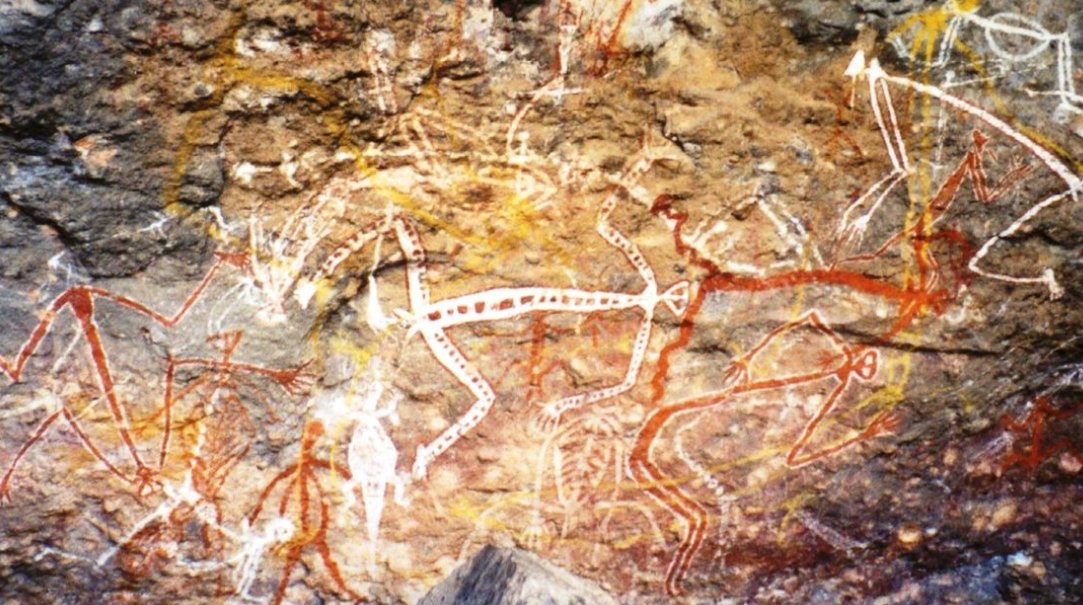 Aboriginal rock painting of Mimi spirits in the Anbangbang gallery at Nourlangie Rock. Source
Aboriginal rock painting of Mimi spirits in the Anbangbang gallery at Nourlangie Rock. Source
Though they are depicted on the rocks of western Arnhem Land and are an important part of northern Australia's folklore, their characteristically elongated and fragile figures have been seen all over Australia.
It is often said that ancient Aboriginal cave paintings that date back as many as forty years are the work of these tiny creatures that possessed creative qualities.
The Mimi liked to portray themselves using red ochre and range from pale red to darkest brown.
They depicted the Mimi hunting, dancing and running, spearing kangaroos, and the rock paintings widely attributed to them, are considered to be the finest among the rock art on the continent.
In that case, the Aboriginal rock-shelter art of Arnhem Land is the Mimi spirits' legacy to mankind, and the creatures are naturally rooted in the landscape of Arnhem Land and thousands of years old.
Thin, Elongated And Naked Creatures
The Mimi are said to be very tall, extremely thin and naked, with genitals often prominent if they are male, and large pendulous breasts if they are female.
Mimi (Mimih) are often depicted on aboriginal bark paintings. Most Mimi are on paintings from Oenpelli in Western Arnhem Land and Crocker Island. Source
They have hair on their big heads. They are rather shy and usually do not go much outside especially when it's windy weather.
They dwell in family groups, hidden in rock chasms of the Land of Arnhem, and have the ability to get inside by blowing on cracks in rocks; the rocks mysteriously respond by opening and allow the creatures inside.
See also:
‘Karlu Karlu’ – Spectacular Sacred Stones Of Aboriginal People In Australia
Invisible to the human eye, the spirits can be sometimes seen by perceptive people.
Their main food is a kind of yam that grows in Arnhem Land.
Mimi Taught Humankind And Sometimes Also Punished
In ancient stories from the past, the Mimi taught Aboriginal ancestors survival and creative skills like the art of painting, hunting, and how to use fire.
They were also friendly to visitors and new settlers on the land but on certain conditions.
It happens the Mimi - sometimes mischievous, untrustworthy, and tricky - may behave in a hostile manner, especially when they are surprised by the sudden presence of a stranger.
According to ancient Aboriginal beliefs, people who frighten these spirits may be punished with illness. Another ancient belief warns that the Aborigines give good advice to all who are passing by Mimi’s territory: don't approach kangaroos, because they may belong to the Mimi spirits, and the owner of the animals does not hesitate to kill anyone who harms his animal.
Aborigines And Spirituality
The Mimi spirits are accepted by the Aborigines who consider them as real as humans.
The core of spirituality of these people means that all aspects of life are in relationships with one another and the environment, as well. If a tree is cut down, the man or woman shares its pain, they say.
The Mimi protect all the animals and guard the balance between them and people.
Written by – A. Sutherland - AncientPages.com Senior Staff Writer
Copyright © AncientPages.com All rights reserved. This material may not be published, broadcast, rewritten or redistributed in whole or part without the express written permission of AncientPages.com
More From Ancient Pages
-
 North America Is Named After An Italian Explorer
Ancient History Facts | Mar 1, 2016
North America Is Named After An Italian Explorer
Ancient History Facts | Mar 1, 2016 -
 Radiocarbon Dating Sheds Light On Historical Events In The Ancient City Of Gezer
Archaeology | Nov 15, 2023
Radiocarbon Dating Sheds Light On Historical Events In The Ancient City Of Gezer
Archaeology | Nov 15, 2023 -
 Archaeologists Discover A Secret Escape Tunnel In Copenhagen, Denmark
Archaeology | May 5, 2020
Archaeologists Discover A Secret Escape Tunnel In Copenhagen, Denmark
Archaeology | May 5, 2020 -
 In Ancient California Matriarchal Society, Daughters Breastfed Longer And Women Accumulated Greater Wealth
Archaeology | Jul 13, 2023
In Ancient California Matriarchal Society, Daughters Breastfed Longer And Women Accumulated Greater Wealth
Archaeology | Jul 13, 2023 -
 Unique 8,400-Year-Old Burial Of A Dog Different From Modern Dogs Discovered In Sweden
Archaeology | Sep 25, 2020
Unique 8,400-Year-Old Burial Of A Dog Different From Modern Dogs Discovered In Sweden
Archaeology | Sep 25, 2020 -
 Koshchey ‘The Immortal’: Strong And Wise Ruler Of Darkness In Slavic Mythology
Featured Stories | Jul 3, 2016
Koshchey ‘The Immortal’: Strong And Wise Ruler Of Darkness In Slavic Mythology
Featured Stories | Jul 3, 2016 -
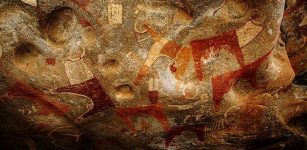 Somalia’s Legacy: Laas Geel Caves Covered With At Least 5,000-Year-Old Paintings
Civilizations | Oct 18, 2018
Somalia’s Legacy: Laas Geel Caves Covered With At Least 5,000-Year-Old Paintings
Civilizations | Oct 18, 2018 -
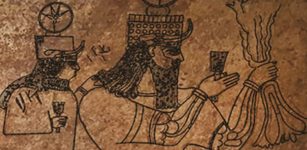 Unexpected Discovery Of Secret Underground Chamber Reveals Mysterious Neo-Assyrian Rock Panel
Archaeology | May 13, 2022
Unexpected Discovery Of Secret Underground Chamber Reveals Mysterious Neo-Assyrian Rock Panel
Archaeology | May 13, 2022 -
 Marble Head Of Roman Emperor Augustus Unearthed In Isernia, Italy
Archaeology | May 7, 2021
Marble Head Of Roman Emperor Augustus Unearthed In Isernia, Italy
Archaeology | May 7, 2021 -
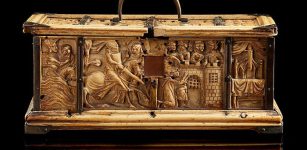 Extremely Rare 700-Year-Old French Gothic Ivory Casket At Risk Of Leaving The UK
Archaeology | Dec 7, 2022
Extremely Rare 700-Year-Old French Gothic Ivory Casket At Risk Of Leaving The UK
Archaeology | Dec 7, 2022 -
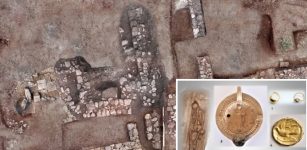 Ruins Of Long-Lost Ancient City Of Tenea Built By Trojans Discovered
Archaeology | Nov 21, 2018
Ruins Of Long-Lost Ancient City Of Tenea Built By Trojans Discovered
Archaeology | Nov 21, 2018 -
 On This Day In History: The ‘Canterbury Tales’ Read For The First Time At Richard II’s Court – On Apr 17, 1397
News | Apr 17, 2017
On This Day In History: The ‘Canterbury Tales’ Read For The First Time At Richard II’s Court – On Apr 17, 1397
News | Apr 17, 2017 -
 Unexpected Discovery Of Huge Iron Age Roundhouse At Dinas Dinlle, Wales
Archaeology | Sep 9, 2019
Unexpected Discovery Of Huge Iron Age Roundhouse At Dinas Dinlle, Wales
Archaeology | Sep 9, 2019 -
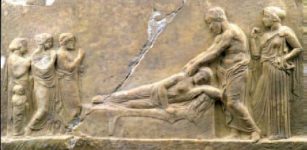 Asclepius Sanctuary On Acropolis Slope Will Be Restored
Archaeology | Jan 3, 2016
Asclepius Sanctuary On Acropolis Slope Will Be Restored
Archaeology | Jan 3, 2016 -
 Use Of Horses In the Bronze Age – New Facts
Archaeology | Jul 14, 2020
Use Of Horses In the Bronze Age – New Facts
Archaeology | Jul 14, 2020 -
 LIDAR Discovers Huge Abandoned Zapotec City With Temples, And Ball Courts In Oaxaca, Mexico
Archaeology | Jan 30, 2025
LIDAR Discovers Huge Abandoned Zapotec City With Temples, And Ball Courts In Oaxaca, Mexico
Archaeology | Jan 30, 2025 -
 Archaeologists Uncover Secrets Of ‘Vallø Borgring’ Viking Age Circular Fortress
Archaeology | Oct 11, 2015
Archaeologists Uncover Secrets Of ‘Vallø Borgring’ Viking Age Circular Fortress
Archaeology | Oct 11, 2015 -
 Ancient Ritual Bundle From Bolivia Reveals Multiple Psychotropic Plants
Archaeology | May 7, 2019
Ancient Ritual Bundle From Bolivia Reveals Multiple Psychotropic Plants
Archaeology | May 7, 2019 -
 Ancient Mystery Of Italy’s Long-Lost Civilization That Pre-Dates The Ancient Roman Empire And Other Great Old Cultures
Ancient Mysteries | Mar 29, 2019
Ancient Mystery Of Italy’s Long-Lost Civilization That Pre-Dates The Ancient Roman Empire And Other Great Old Cultures
Ancient Mysteries | Mar 29, 2019 -
 Large Collection Of 2,200-Year-Old Tombs With Boat Coffins Made Of Nanmu Wood, Unearthed In SW China
Archaeology | Feb 10, 2017
Large Collection Of 2,200-Year-Old Tombs With Boat Coffins Made Of Nanmu Wood, Unearthed In SW China
Archaeology | Feb 10, 2017

